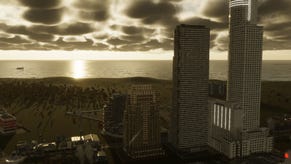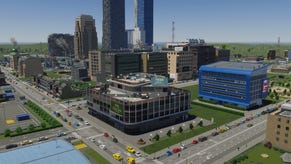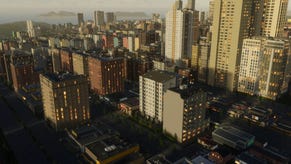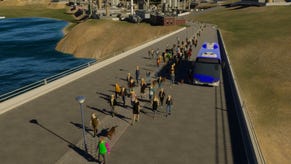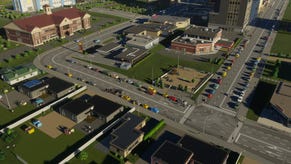Cities: Skylines 2 review: A standard-bearer that ought to have higher standards
Slim City
Cities: Skylines the game that defined the city building genre in the wake of Sim City's self-destruction never truly grabbed me. It’s important to say that, because it helps with the context, and it’s context that I’m struggling with. For a follow-up, Cities: Skylines 2 is basically good. I’ll even continue playing it, which isn’t that common after a review, especially for such a timesink. This time around, it has grabbed me, and yet it's such a small step forward that I don't feel entirely comfortable recommending it outright.
You probably know what Cities: Skylines 2 involves: it's about placing zones next to roads, then watching as houses, shops, and factories appear. When people show up to inhabit them, you place services to keep them alive and happy and ideally quiet, and then you tax the marrow from their bones. In a welcome step back from Sim City's monocultural neoliberal hellscape, you can actually tax and spend, though only up to 30%. You can even subsidise homes or industry somewhat, which can be surprisingly viable. I'm still not clear on how much of this actually works, as you're given no detail on what exactly is being taxed, nor how money, goods and services interact. This is kind of a shame, but reflects that Skylines wants to keep the money flowing. It's more about building than balancing books.
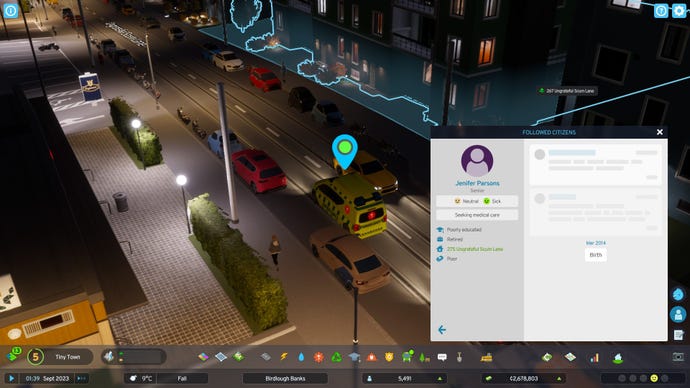
It is, however, making a bigger push towards resource management, and detailed simulation of individuals, and the logistical consequences (read: traffic) of both. Citizens arrive in town towing little (very American, even with the European model set) trailers, or on boats, or in a wave of penniless lesbian motorbikes over the footbridge for some reason, and they visibly go from home to work, and from school to the shops. Trucks drive from the logger's to the furniture mill, then to a table shop, and then... honestly, I'm not sure. Exports are obvious, but internally, things seem to get bought and consumed and that's just that. Buildings appear on their own, and you never have to actually track your resources beyond money. There's stuff happening, and you don't have to look at it too closely, just periodically check whether you're importing something you could produce instead.
But you'll want to design your city so businesses and people make those connections in easy, efficient ways. It's a fun challenge, and though the default road is an already busy dual carriageway, there are bus lanes, industrial alleys, cheap and easy bridges, tunnels, pedestrianisation, footpaths (buried away in landscaping for some reason), and roads with seven lanes that I assume are satirical because what kind of idiot thinks that's a solution to anything besides low tarmac sales?
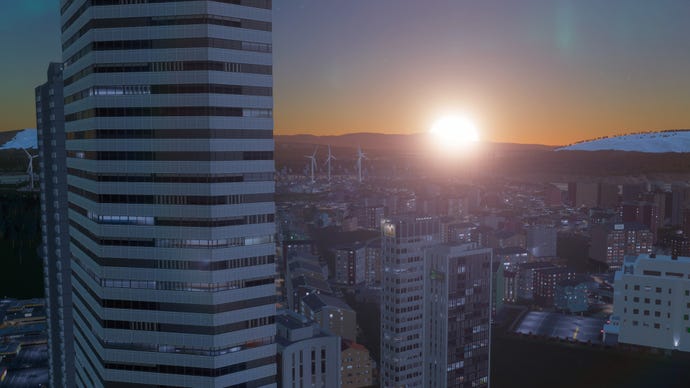

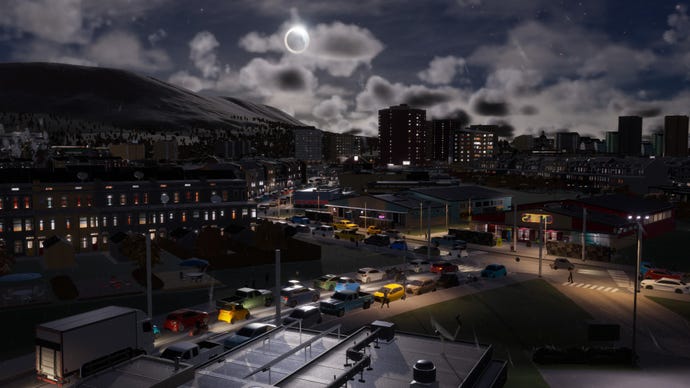

The problem is that brute forcing it with roads is really the only tool you have. Shops and factories obey zoning but there's nothing stopping the concrete factory from appearing across town from the quarry, clogging up your city centre lorries unless you build them a dedicated route. You have many free public transport options but citizens will cling to their stupid cars even when you demolish the car parks and charge them $50 to use the streets. Any option short of sending goons through the streets to shoot drivers does nothing to stop every pavement from instantly filling with parked cars, and even the "combustion engine ban" exempts residents and businesses within that district, begging the question of what the hell is the point then?
Public transport is where things get the most involved, and the most frustrating. Tramlines refuse to connect properly unless you demolish and rebuild the whole high street (fiddly roads are endemic to the genre, but CS2's paucity of control shortcuts and tendency to demolish everyone's home if they can see your new footpath from the window don't help). Bus routes can be created but not edited or easily accessed, and refuse to space out or use a sane number of vehicles. The systems across the board are kind of there, but there aren't enough options to apply them properly, nor enough information shown to plan things in depth.

Getting that level of control would maybe turn CS2 into harder work than most players probably want. That's not a bad thing, and Skylines doesn't have to be a heavy duty simulationist dealie, but its few and iterative improvements hint in that direction, and they feel like a half measure. The most engaging new thing is the rejig of the ground level simulation of people, and the joy of watching them walk their dog or wait for a bus or get driven to the hospital is, I think, what's grabbed me this time.
But most things work as before. Other things do not. The "policies" you can apply to your city or its districts are so miserably limited in number and impact that they're barely worth including (even the "no highrise" policy Alec noted in his Cities: Skylines review is gone), or internet services that amount to "place an extra tower", and its new "progression" system serves no purpose that you couldn't get for free by counting your own breaths and patting yourself on the back for every hundred.
Even when I put aside my biases, it's hard not to criticise CS2 for what it's not. Going down the full list of DLC for the original feels like a list of things that should have been here, and that’s the context problem.
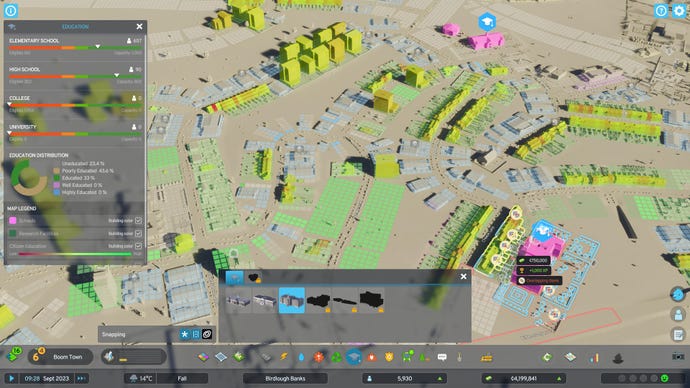

Skylines 2's Steam page boasts that “If you can dream it, you can build it”. Well, I’d like more than one (hideous) university model, please. I’d like more than one type of industrial zone. I’d like nature reserves. I’d like markets, public libraries, fishing docks, canals, and industry-specific policies and bans. I’d like a city that doesn’t charge fees to collect bins (what?), and a dozen other things that most towns I’ve lived in had, and that several recent city building games have done. Of course that line is marketing hyperbole, but when you’re saying that and "the most realistic and detailed city builder ever" to push a sequel to a game whose complete DLC set goes for £320 even with a discount, that was still being added to as recently as this May and abandoning Steam's mod workshop to boot, it's a line you ought to be able to back up.
I haven't had the performance issues everyone's been fretting about, for what that's worth. It ran absolutely fine on “medium” with my usual anti-blur options, until I put everything up to "high" again for screenshots and it became both uglier and much slower. Colossal Order have been quick to issue acknowledgements and a second review build of graphical fixes, and “intend for these performance improvements to be delivered at or very shortly after launch”. But glitches that only happen in fancy mode matter little to me, and will probably come out in the wash.
A bigger issue is that if you've already played Skylines, especially if you picked up a few slices of DLC, I'm not really sure what you'd be buying this for. All this leaves me feeling like Cities: Skylines 2 is an engaging city builder of that particular SimCity stripe that I enjoyed a lot despite myself, but one that I can recommend only if you don't own the original.
This review was based on a review copy provided by the publisher Paradox Interactive.


